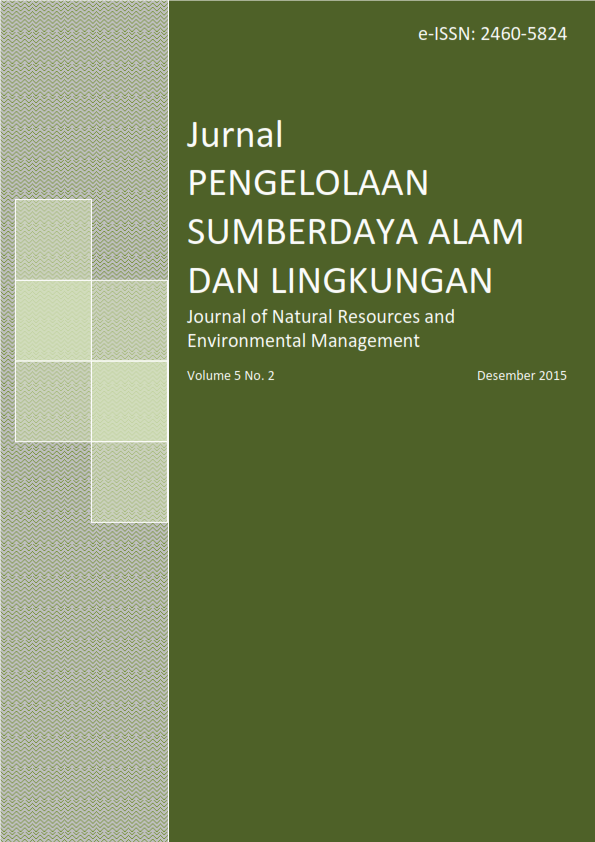ANALISIS DAYA TAMPUNG BEBAN PENCEMAR SUNGAI PESANGGRAHAN (SEGMEN KOTA DEPOK) DENGAN MENGGUNAKAN MODEL NUMERIK DAN SPASIAL
Abstract
The objective of the study is to calculate and analyze the pollution load capacity of the specified river segment using combination of the water quality model “QUAL2Kw” and Geographic Information System (SIG). Location of the study is Pesanggrahan river in the Depok City sections. The result of modeling shows that the actual pollutant load discharged to the river section for BOD, COD and TSS are 8.257; 59.930 dan 48.975 kg/days, respectively. Meanwhile the allowable pollutant load or the pollution load capacity of the section of the river for those pollutant parameters are 8.111, 58.20; 49.085 kg/days, respectively. It indicates that the pollution load capacity of the section of the river has been exceeded that needs reduction as much as load of 146 kg/days for BOD, 1,650 kg/days for COD and 110 kg/days for TSS in order to to meet the set water quality standard of the river section. The coefficient of determination (r2) of 0,99 for BOD and COD and 0,998 for TSS indicates that the modelled concentration of BOD, COD and TSS and those concentration of measured results show the strong relationship and the low value difference. In addition, the calibration of modeling results have an error rate of less than 10% indicated by the value of RMSE of 0.065, 0.09, 0.2 for BOD, COD and TSS, respectively. The error value shows that the water quality modeling results can be used for predicting the pollution load capacity or the allowable pollutant load of the river section
Keywords: allowable pollutant load, GIS, Pesanggrahan River, pollution load capacity, QUAL2Kw
Authors
Authors who publish with this journal agree to the following terms:
- Authors retain copyright and grant the journal right of first publication with the work simultaneously licensed under a Creative Commons Attribution License that allows others to share the work with an acknowledgement of the work's authorship and initial publication in this journal.
- Authors are able to enter into separate, additional contractual arrangements for the non-exclusive distribution of the journal's published version of the work (e.g., post it to an institutional repository or publish it in a book), with an acknowledgement of its initial publication in this journal.
- Authors are permitted and encouraged to post their work online (e.g., in institutional repositories or on their website) prior to and during the submission process, as it can lead to productive exchanges, as well as earlier and greater citation of published work (See The Effect of Open Access).






